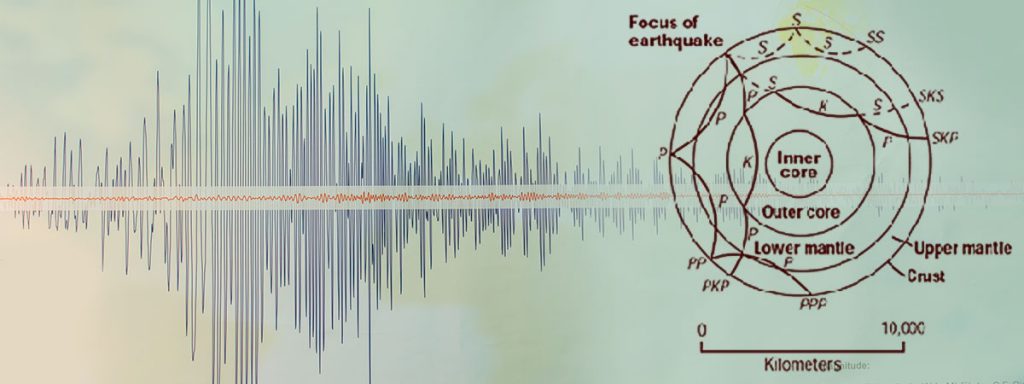
Current earthquakes
what is happening with our earth?
About Earthquakes
- Seismology & Geophysics
- Scientific & Earthquake Station
- Earthquakes
- Structure of the Earth
- Recent Earthquakes
- Bomb blast 23-09-2023
- Earthquake Morocco 08-09-2023
- Bomb blast measurable? 25-03-2023
- Earthquake Turkey 06-02-2023
- Bomb blasts 30-07-2022
- Bomb explosions 30 / 31 January 2021 in Göttingen
- Earthquake Fiji Islands – August 19, 2018
- Alaska seaquake – January 2018
- Mexico quake – September 2017
- Greece quake – July 2017
- Italy quake – August to October 2016
- The most striking earthquakes
- Earthquake stations worldwide
- Moving Events in Göttingen
Given the conformity of the seismic impacts of the two explosions, it is very unlikely that a gas explosion can be assumed as the energy source of the detonation of 30/12/1998. An explosion taking place at a depth of only 2 m in the area of the gas pipeline and producing a similar effect in the far field as the 1992 event at a depth of 7 m is expected to cause much more serious devastation on the surface. Since not even the windows of the adjacent buildings were destroyed, the explosion centre is assumed to be located at a depth of more than 2 m. The geological underground at both explosion sites is also very similar, namely construction rubble dumped on Holocene fluvial deposits (swamp loam) of the Leine River (Nagel and Wunderlich, 1969). For this reason, the comparable craters of 1992 and 1998 also suggest explosion centres at a similar depth for both events (1992: about 7 m). However, since a gas bubble of sufficient size, which then would also have to ignite, cannot emerge at such depths, self-detonation of a deep-penetrating aerial bomb is more likely. This assumption is also backed by the fact that Allied bombing raids had taken place in the affected area around Göttingen’s railway station. Some of the heavy aerial bombs (~ 500 kg) could indeed have penetrated into the deposits of the Leine River. The absence of bomb splinters following the detonation of 1998 can probably be explained by the detonation occurring even below the previously sampled depth of 7 m. In the search for other duds, which is currently (February 1999) ongoing, drillings are therefore made to depths of up to 10 m.
Acknowledgements
W. Steinhoff (Göttingen) discovered the recording of the explosions by the Wiechert seismograph and produced contact prints of the smoked-paper recordings. Dr. H. Schreiber (Göttingen) ascertained the calibration constants of the Wiechert seismograph. Dr. G. Hartmann (BGR Hanover) provided us with the data of the GRSN station CLZ with a sampling rate of 80 Hz. The data was processed using the SeismicHandler programme by Dr. K. Stammler (Erlangen).


